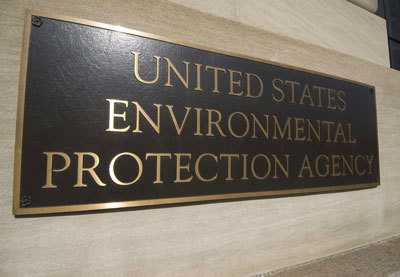On October 15, 2013, the US Supreme Court (SCOTUS) granted ‘Certiorari’ to Petitioners who have been suing the EPA over regulations to control CO2. In 2007, SCOTUS had ruled that CO2 may be considered a pollutant under the Clean Air Act (CAA), provided EPA could demonstrate that continued emission of CO2 would harm ‘human health and welfare.’ In 2009, EPA published the required Endangerment Finding, which was subsequently attacked on scientific grounds by a collection of plaintiffs. [Full disclosure: SEPP is one of the many plaintiffs involved in this lawsuit.]
However, in June 2012, the Court of Appeals for the DC Circuit ruled against plaintiffs, giving deference on the science to EPA. EPA had proceeded to institute emission limits for motor vehicles, essentially by setting mileage standards. EPA is now arguing that, having successfully set CO2 limits for motor vehicles in May 2010, the CAA requires that emission limits be set on all other emitters of CO2. Using their statutory authority to set New Source Performance Standards (NSPS), EPA has proposed stringent limits on new power plants that will make new coal plants virtually impossible to construct. The EPA also wants to limit emissions from existing coal plants, arguing that EPA can set guidelines which the states would have to follow in regulating emissions from existing plants.
In the coming case, plaintiffs are essentially appealing the decision of the DC Circuit Appeals Court and hope to prevail — even though SCOTUS is not likely to listen to scientific arguments — although publication of the authoritative NIPCC report “Climate Change Reconsidered-II” (Heartland, 2013) cannot be ignored. In fact, the Supreme Court has restricted its Cert to the single question: Is EPA permitted to extend its authority to regulate emissions from motor vehicles to stationary sources?
The EPA is likely to use a section of the Clean Air Act called Prevention of Significant Deterioration (PSD). They have a strong case; it will require considerable ingenuity for the plaintiffs’ lawyers to prevail over the EPA. One sees at least two possibilities.
A. NAAQS (National ambient air quality standards)
The CAA requires the setting of NAAQS. However, it is a fact that
1. EPA has not set a NAAQS for CO2
2. EPA does not know how to set a NAAQS for CO2. There is no scientific basis for doing so.
3. Even if EPA were to set a NAAQS, there is no way in which EPA can demonstrate that its regulations can achieve it; further, there is no way whereby EPA can enforce it — since CO2 is global and EPA cannot control emissions from other nations, like China.
4. But without a NAAQS as a goal, any effort to set emission limits must be judged to be ‘arbitrary and capricious.’ In other words, without a specific target, there is no rational way for setting emission limits for power plants or other emitters.
B. Tailoring Rule
In the regulation of ‘criteria pollutants’ (of which there are currently six) the arcane provisions of the CAA require EPA to regulate emissions from sources that emit more than either 100 or 250 tons per year.
These limits are ok for CO2 from individual small sources, motor vehicles and even big trucks. But when applied to stationary sources, there would be millions of them, including apartment and office buildings, hospitals, schools, prisons, etc.
Clearly, EPA is unable to muster an effort to issue controls for all such sources. They have therefore arbitrarily raised the lower limit to 75,000 to 100,000 tons per year — by issuing a so-called ‘Tailoring Rule.’ It would permit regulation of major sources, such as power plants, refineries, and other large industrial installations.
However, EPA cannot simply change the law to suit its convenience. This cannot be done by administrative action; it must be done by the author of the law — which is Congress. Again, EPA’s revised lower limit may be considered “arbitrary and capricious”
What to do?
The sensible course for EPA is to go back to Congress and suggest an amendment to the Clean Air Act to permit continuing without setting a NAAQS for CO2 and for allowing a ‘Tailoring Rule’ that makes CO2 regulation more manageable. But it is unlikely that EPA will choose to do this. Because once the matter goes back to Congress, it is no longer under the control of the executive branch of government.
Congress, in its wisdom, could decide to do away with the PSD (Prevention of Significant Deterioration) requirement for CO2 and thus not permit EPA to extend emission controls to power stations. Or, going even further, Congress may decide that CO2 is not to be considered as a criteria pollutant and cannot be regulated at all under the Clean Air Act. In other words, Congress may decide that CO2 is not a ‘pollutant’ — and thus overturn and make irrelevant the Supreme Court decision of 2007.
There is little doubt that the House, as currently constituted, would choose one of these routes. It is entirely possible that the US Senate will go along — even though it has a Democratic majority. But 16 Democratic senators are up for re-election in 2014 — with some from coal states in the Midwest. So there is a strong possibility that the Congress will consider CO2 to be a non-pollutant. Even if the White House were to apply a veto, there is a good chance that it will be overturned — which would constitute a big defeat for the Obama Administration.
But political futures are hard to predict. Much may ride on the outcome of Obamacare and other snafus that might affect public opinion about the White House and thereby the mood of Congress. One thing for sure: public policy should not be set by unelected bureaucrats.
[Originally published on the American Thinker]





